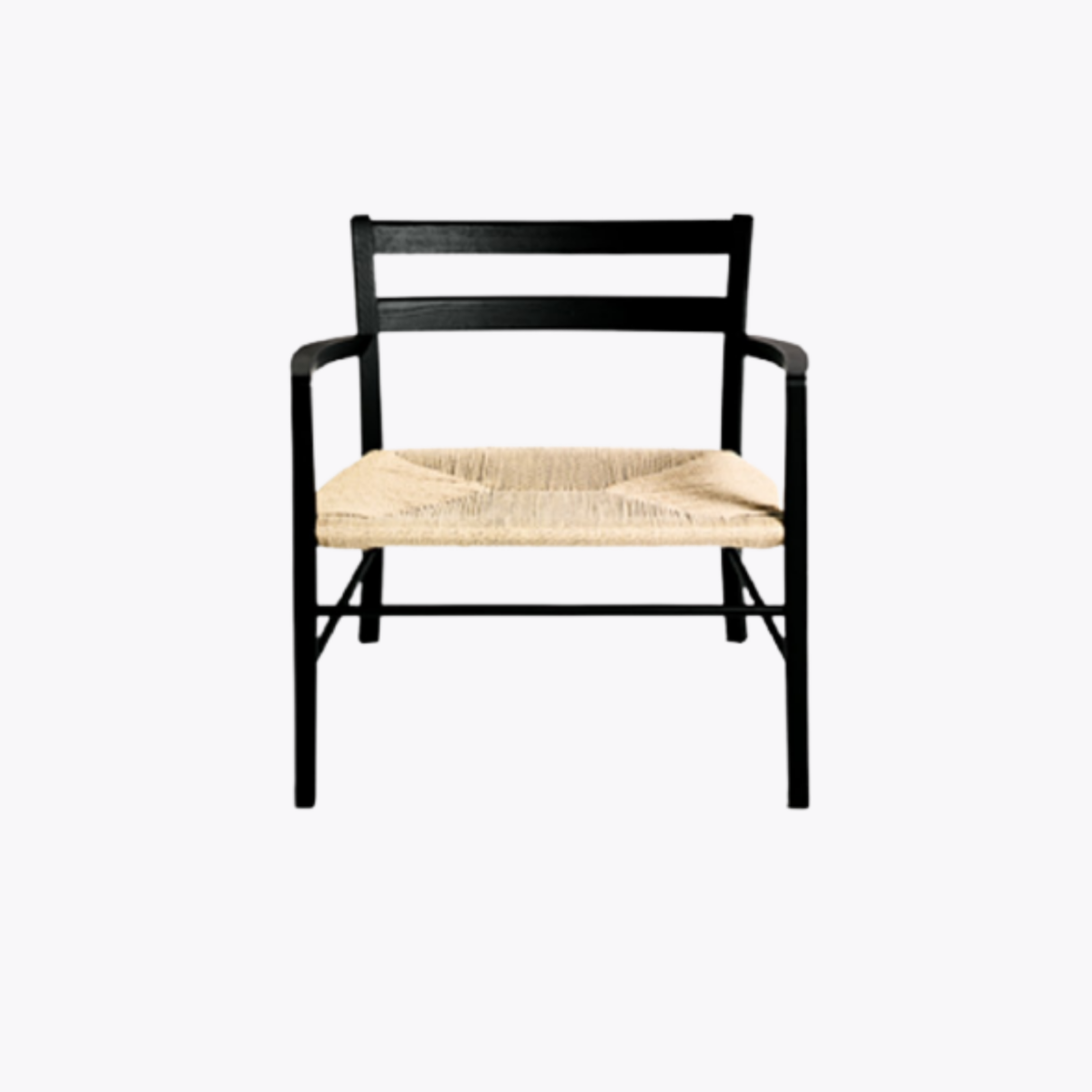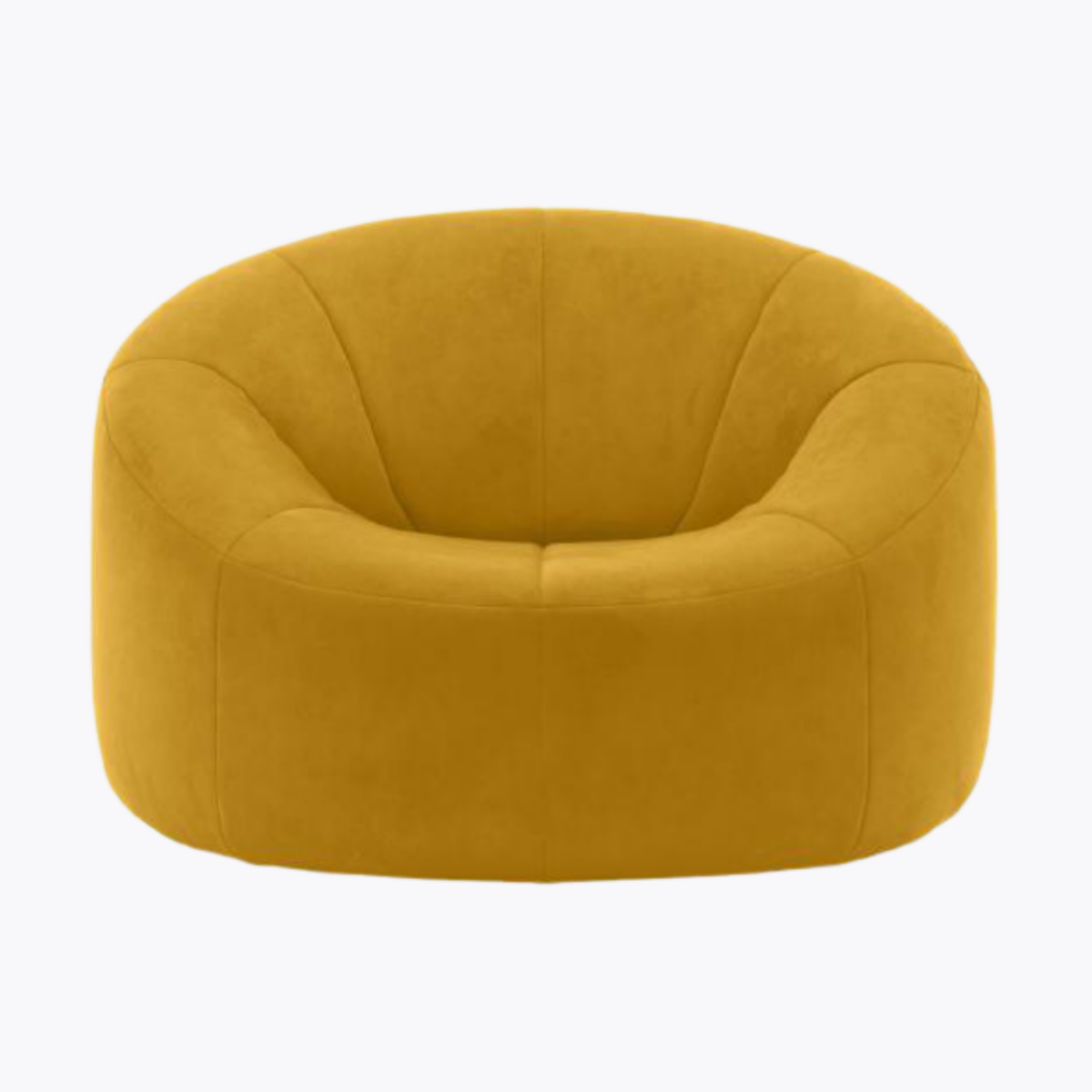
Taru Armchair complete element
With Taru, the designer creates a welcoming and beautifully crafted settee that highlights Ligne Roset’s expertise. Its fully upholstered base gives it a distinctive character, while the gently curved backrest seamlessly intertwines with the seat in a striking bi-material design.
Available in large, medium, and one-arm versions, Taru stands out for its ability to mix materials, colors, and textures, allowing full customization. Its sculptural back makes it as stunning from behind as it is from the front. Optional back cushions enhance comfort, while a matching footstool completes the look. A refined balance of style, craftsmanship, and versatility.
Structure of armrests and back in mechanically-soldered tubular steel, clad in foam and 110gr/m² polyester quilting. Structure of seat composed of 3-layer particleboard and plywood for excellent rigidity.
COMFORT
Suspension of seat via elastic webbing. Seat cushion in high resilience Bultex foam (38kg/m3 – 3.6 kPa, 36kg/m3 - 2.8 kPa, 38kg/m3 – 2.8 kPa) clad in 110g/m² polyester quilting.
Back composed of high resilience Bultex foam (36kg/m3 – 2.8 kPa, 38kg/m3 – 2.8 kPa) clad in ultra-flexible polyurethane foam (30 kg/m3 – 1.8 kPa) and 110g/m² polyester quilting. Cushion (60x60 cm) filled with new duck feathers (15% down).
MAKING-UP
3 mm bourrelet stitch on back and armrests. Twin-needle stitching on seat. Covers may be removed by a professional.
IMPORTANT : when the TARU settees, 1-arm settees and canalounges are upholstered in ARDA, GENTLE, MAXI or SEA there are no seams in the centre of the seat (there is a seam in the case of all covering materials). In addition, in the case of GENTLE, the bourrelet stitch on the contour of the back is replaced with baguette overstitching.
Sebastian Herkner (born 1981) studied Product Design at HfG Offenbach University of Art and Design. During his studies he began to focus on designing objects and furniture, honing his keen feel for materials, colors and textures. For a short while he then worked for Stella McCartney in London. In the year 2006 Sebastian Herkner founded his own studio. Since that time, he has designed furniture, lamps and smaller items for manufacturers such as Ames, and Tradition, Cappellini, ClassiCon, Dedon, Ligne Roset, Linteloo, Moroso, Pulpo, Rosenthal, Thonet, Wittmann and Zanotta. Herkner also works on interior architecture projects and museum and exhibition design. His works have won numerous accolades – among others the IF Award, the Iconic Award and the Elle Deco International Design Award (EDIDA). As Guest of Honour at imm cologne 2016, Sebastian Herkner provided the design for “Das Haus”. In 2019, Maison&Objet elected him “Designer of the Year”.
An unconditional love for traditional craftsmanship paired with a good feel for new technologies, a true flair for colour, authentic materials and textures, an unadulterated curiosity for different cultures, for embracing and integrating them, and a commitment to taking responsibility for the things and people one works with, not to mention consideration and respect for all of the details and steps necessary to create an extraordinary object…: Since the success of the Bell Table for ClassiCon in 2012, Sebastian Herkner has never looked back, whilst remaining true to his word – and himself. Balance and intuition are important and enduring factors in his work, which he sees as a continuous dialogue that straddles the disciplines: It takes him to the far corners of the world in search of almost forgotten crafts techniques, of factories that have a tradition going back centuries, to the crafts Sleeping Beauties of the craft world that he can awaken from their slumbers. In the process he creates not just chairs, sofas, lamps, tables, vases and carpets, but an entire cosmos that shines a new light on how objects can appeal to the senses, and where beauty is cultivated from within the process itself and from his empathy towards people.


